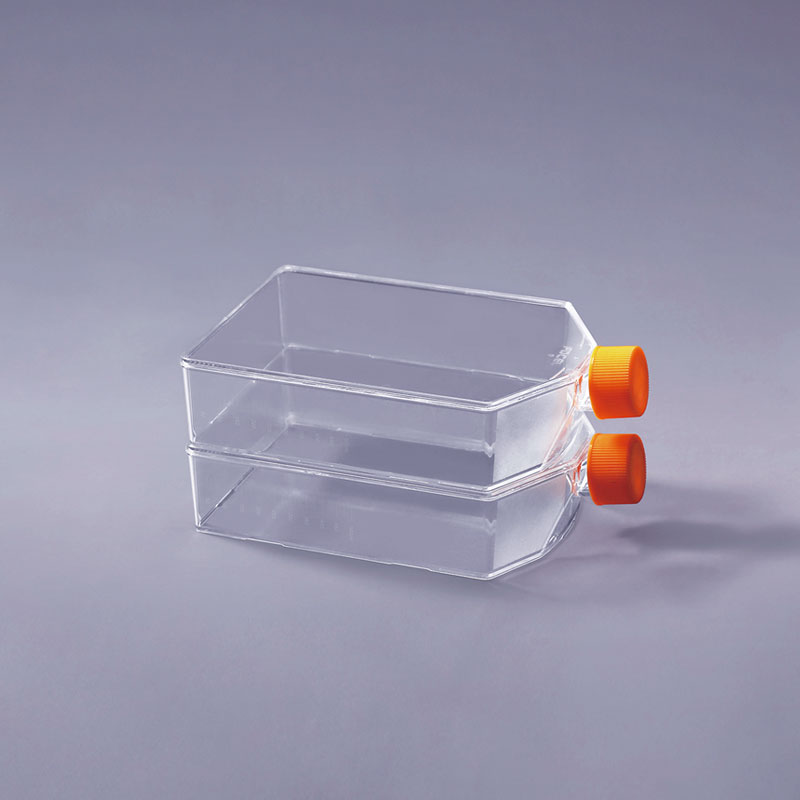The difference between the sealing cap and the breathable cap of the cell culture flasks
The cell culture flasks is a kind of cell culture consumable, which plays an important role in the medium-scale cell and tissue culture in the laboratory. The bottle cap of this kind of bottle is divided into two types: a sealed cap and a breathable cap. Then the two caps are respectively, what kind of scenario is applicable and what is the difference?
The cell culture environment includes sterile, suitable temperature (37~38℃), osmotic pressure (260~320mmol/L), carbon dioxide and suitable pH (7.2~7.4). Cell culture square flasks generally require the help of incubators or greenhouses for cell culture. According to the different use environments, the lids are divided into two types: sealed lids and breathable lids.

Sealing cap: This kind of cap is completely sealed. There are no vents on the cap. It is mainly used under carbon dioxide-free conditions such as incubators and greenhouses. It has good airtightness and can prevent the invasion of external bacteria and promote cell reproduction. Create a good growth environment.
Breathable cover: This kind of cover is equipped with vent holes, these holes can let the carbon dioxide in the environment enter the cell culture square flask, and create suitable growth conditions for cell growth. There is a sterile breathable membrane on the top of the bottle cap, which has good waterproof and breathable functions. The liquid in the cell culture square bottle does not affect the microbial barrier and breathability of the breathable membrane after contact, which can ensure a good growth state of cells.
The two caps of the cell culture flasks meet the needs of different culture environments for cell growth. When choosing the cell culture flasks, you should choose a suitable cap according to the specific cell culture environment to avoid affecting cell growth.
评论
发表评论